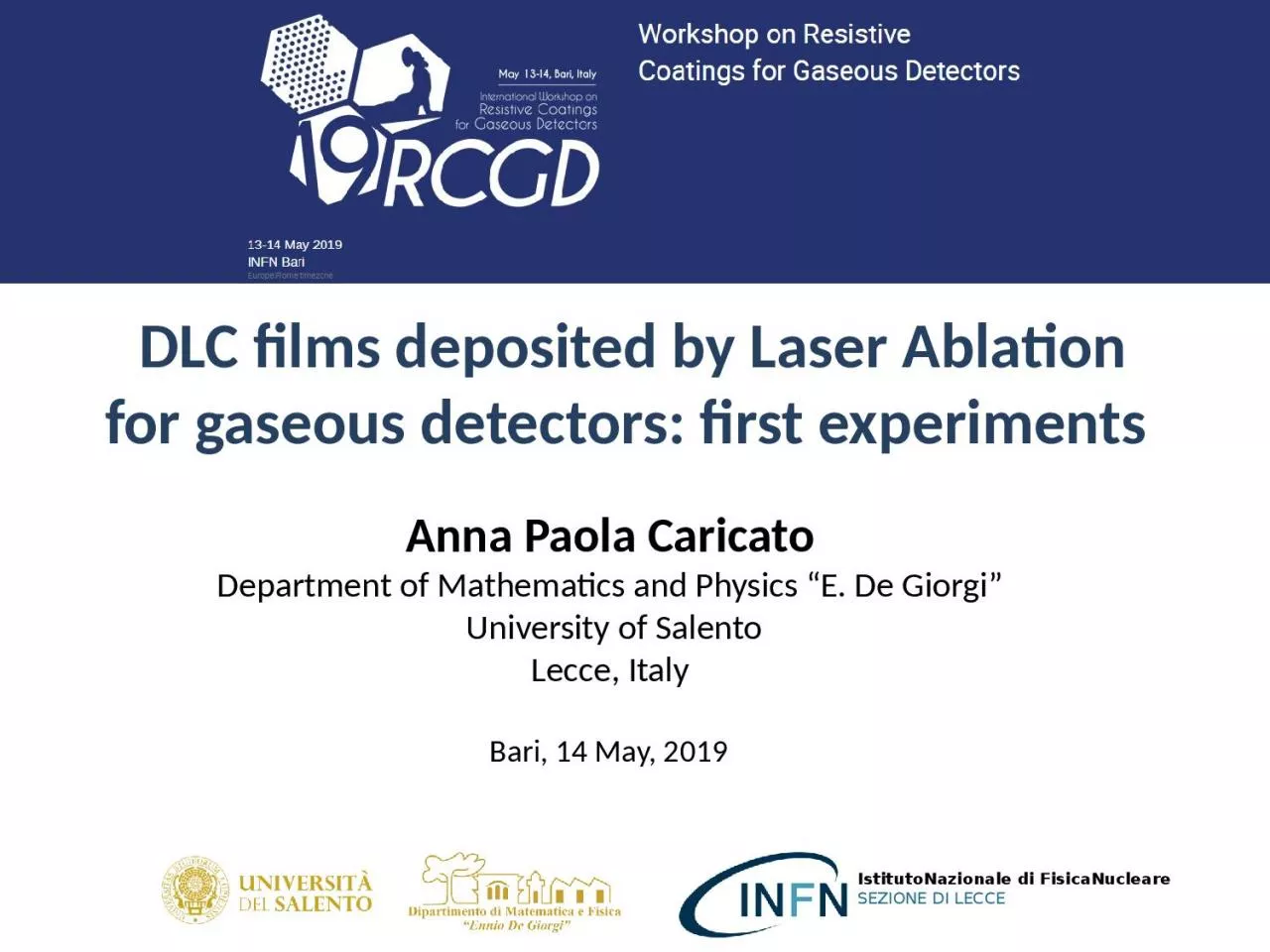PPT-IstitutoNazionale di FisicaNucleare
Author : PrincessPeach | Published Date : 2022-08-04
SEZIONE DI LECCE Bari 14 May 2019 DLC films deposited by Laser Ablation for gaseous detectors first experiments Anna Paola Caricato Department of Mathematics
Presentation Embed Code
Download Presentation
Download Presentation The PPT/PDF document "IstitutoNazionale di FisicaNucleare" is the property of its rightful owner. Permission is granted to download and print the materials on this website for personal, non-commercial use only, and to display it on your personal computer provided you do not modify the materials and that you retain all copyright notices contained in the materials. By downloading content from our website, you accept the terms of this agreement.
IstitutoNazionale di FisicaNucleare: Transcript
Download Rules Of Document
"IstitutoNazionale di FisicaNucleare"The content belongs to its owner. You may download and print it for personal use, without modification, and keep all copyright notices. By downloading, you agree to these terms.
Related Documents

